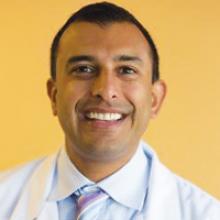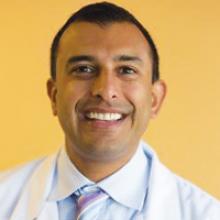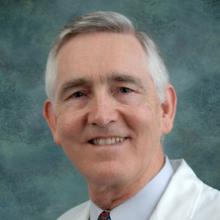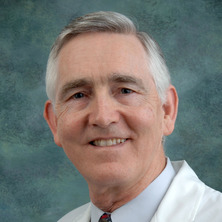User login
American Academy of Neurology (AAN): Annual Meeting 2017
Erenumab May Reduce Headache Days in Episodic Migraine
BOSTON—Erenumab reduces the number of migraine days per month in patients with episodic migraine, according to a study presented at the 69th Annual Meeting of the American Academy of Neurology. The treatment also reduces the use of acute migraine medication and improves function.
Erenumab is a fully human monoclonal antibody developed to block the pathway of calcitonin gene-related peptide (CGRP). The treatment showed promise in a phase II study in patients with episodic migraine and in a phase II study of patients with chronic migraine, according to Peter Goadsby, MD, PhD, Professor of Neurology at the University of California, San Francisco School of Medicine.
A Test of Two Doses
Dr. Goadsby and colleagues conducted a phase III study of 955 participants to examine whether erenumab would be an effective preventive treatment for episodic migraine. Eligible patients had between four and 14 migraine days per month and were allowed to take one concomitant migraine medication. Patients who previously had failed two preventive medications were excluded. After screening, patients underwent a four-week baseline period during which they kept electronic migraine diaries. The investigators then randomized patients in groups of equal size to placebo, 70 mg of subcutaneous erenumab, or 140 mg of subcutaneous erenumab. The treatment period lasted for six months.
As has been the case in many studies of migraine during the past 25 years, the typical patient in this study was a 41-year-old Caucasian woman, said Dr. Goadsby. Slightly more than half of participants had no previous exposure to a preventive therapy. The mean number of migraine days in all treatment groups was eight, and the mean number of headache days was nine. The treatment groups were well balanced.
Treatment Reduced Medication Use
During the last three months of treatment, the mean number of monthly migraine days decreased by 3.2 for patients receiving 70 mg of erenumab and by 3.7 for patients receiving 140 mg of erenumab, compared with 1.8 for patients receiving placebo. The difference between the active and control arms was statistically significant. The rate of participants who had a 50% reduction in migraine attacks was 26.6% for controls, 43% for patients receiving the 70-mg dose, and 50% for patients receiving the 140-mg dose.
The use of acute medicines decreased by 1.1 days for patients receiving 70 mg of erenumab and by 1.6 days for patients receiving 140 mg, compared with a decrease of 0.2 days for patients receiving placebo. Using the Migraine Physical Function Impact Diary, participants in the 70-mg group reported that the impact of migraine on everyday activities decreased by 5.5 points. Participants in the 140-mg group reported a 5.9-point reduction in this end point. Participants in the placebo group reported a 3.3-point reduction. Physical impairment decreased by 4.2 points for the 70-mg group and by 4.8 points for the 140-mg group versus 2.4 points for the placebo group.
Erenumab was well tolerated, and none of the serious adverse events appeared to be related to treatment. The most common adverse event was injection-site reactions. About 6% of the entire cohort developed antibodies to erenumab, including 8% in the 70-mg group and 3.2% in the 140-mg group. One patient receiving 70 mg had a neutralizing antibody, and no patients in the 140-mg group had neutralizing antibodies.
The study results are exciting, said Dr. Goadsby. In the future, treatments that target the CGRP pathway could be provided to migraineurs who do not respond to or cannot tolerate the current therapies, he added.
The trial was sponsored by Amgen, and Dr. Goadsby previously has consulted for the company.
—Erik Greb
BOSTON—Erenumab reduces the number of migraine days per month in patients with episodic migraine, according to a study presented at the 69th Annual Meeting of the American Academy of Neurology. The treatment also reduces the use of acute migraine medication and improves function.
Erenumab is a fully human monoclonal antibody developed to block the pathway of calcitonin gene-related peptide (CGRP). The treatment showed promise in a phase II study in patients with episodic migraine and in a phase II study of patients with chronic migraine, according to Peter Goadsby, MD, PhD, Professor of Neurology at the University of California, San Francisco School of Medicine.
A Test of Two Doses
Dr. Goadsby and colleagues conducted a phase III study of 955 participants to examine whether erenumab would be an effective preventive treatment for episodic migraine. Eligible patients had between four and 14 migraine days per month and were allowed to take one concomitant migraine medication. Patients who previously had failed two preventive medications were excluded. After screening, patients underwent a four-week baseline period during which they kept electronic migraine diaries. The investigators then randomized patients in groups of equal size to placebo, 70 mg of subcutaneous erenumab, or 140 mg of subcutaneous erenumab. The treatment period lasted for six months.
As has been the case in many studies of migraine during the past 25 years, the typical patient in this study was a 41-year-old Caucasian woman, said Dr. Goadsby. Slightly more than half of participants had no previous exposure to a preventive therapy. The mean number of migraine days in all treatment groups was eight, and the mean number of headache days was nine. The treatment groups were well balanced.
Treatment Reduced Medication Use
During the last three months of treatment, the mean number of monthly migraine days decreased by 3.2 for patients receiving 70 mg of erenumab and by 3.7 for patients receiving 140 mg of erenumab, compared with 1.8 for patients receiving placebo. The difference between the active and control arms was statistically significant. The rate of participants who had a 50% reduction in migraine attacks was 26.6% for controls, 43% for patients receiving the 70-mg dose, and 50% for patients receiving the 140-mg dose.
The use of acute medicines decreased by 1.1 days for patients receiving 70 mg of erenumab and by 1.6 days for patients receiving 140 mg, compared with a decrease of 0.2 days for patients receiving placebo. Using the Migraine Physical Function Impact Diary, participants in the 70-mg group reported that the impact of migraine on everyday activities decreased by 5.5 points. Participants in the 140-mg group reported a 5.9-point reduction in this end point. Participants in the placebo group reported a 3.3-point reduction. Physical impairment decreased by 4.2 points for the 70-mg group and by 4.8 points for the 140-mg group versus 2.4 points for the placebo group.
Erenumab was well tolerated, and none of the serious adverse events appeared to be related to treatment. The most common adverse event was injection-site reactions. About 6% of the entire cohort developed antibodies to erenumab, including 8% in the 70-mg group and 3.2% in the 140-mg group. One patient receiving 70 mg had a neutralizing antibody, and no patients in the 140-mg group had neutralizing antibodies.
The study results are exciting, said Dr. Goadsby. In the future, treatments that target the CGRP pathway could be provided to migraineurs who do not respond to or cannot tolerate the current therapies, he added.
The trial was sponsored by Amgen, and Dr. Goadsby previously has consulted for the company.
—Erik Greb
BOSTON—Erenumab reduces the number of migraine days per month in patients with episodic migraine, according to a study presented at the 69th Annual Meeting of the American Academy of Neurology. The treatment also reduces the use of acute migraine medication and improves function.
Erenumab is a fully human monoclonal antibody developed to block the pathway of calcitonin gene-related peptide (CGRP). The treatment showed promise in a phase II study in patients with episodic migraine and in a phase II study of patients with chronic migraine, according to Peter Goadsby, MD, PhD, Professor of Neurology at the University of California, San Francisco School of Medicine.
A Test of Two Doses
Dr. Goadsby and colleagues conducted a phase III study of 955 participants to examine whether erenumab would be an effective preventive treatment for episodic migraine. Eligible patients had between four and 14 migraine days per month and were allowed to take one concomitant migraine medication. Patients who previously had failed two preventive medications were excluded. After screening, patients underwent a four-week baseline period during which they kept electronic migraine diaries. The investigators then randomized patients in groups of equal size to placebo, 70 mg of subcutaneous erenumab, or 140 mg of subcutaneous erenumab. The treatment period lasted for six months.
As has been the case in many studies of migraine during the past 25 years, the typical patient in this study was a 41-year-old Caucasian woman, said Dr. Goadsby. Slightly more than half of participants had no previous exposure to a preventive therapy. The mean number of migraine days in all treatment groups was eight, and the mean number of headache days was nine. The treatment groups were well balanced.
Treatment Reduced Medication Use
During the last three months of treatment, the mean number of monthly migraine days decreased by 3.2 for patients receiving 70 mg of erenumab and by 3.7 for patients receiving 140 mg of erenumab, compared with 1.8 for patients receiving placebo. The difference between the active and control arms was statistically significant. The rate of participants who had a 50% reduction in migraine attacks was 26.6% for controls, 43% for patients receiving the 70-mg dose, and 50% for patients receiving the 140-mg dose.
The use of acute medicines decreased by 1.1 days for patients receiving 70 mg of erenumab and by 1.6 days for patients receiving 140 mg, compared with a decrease of 0.2 days for patients receiving placebo. Using the Migraine Physical Function Impact Diary, participants in the 70-mg group reported that the impact of migraine on everyday activities decreased by 5.5 points. Participants in the 140-mg group reported a 5.9-point reduction in this end point. Participants in the placebo group reported a 3.3-point reduction. Physical impairment decreased by 4.2 points for the 70-mg group and by 4.8 points for the 140-mg group versus 2.4 points for the placebo group.
Erenumab was well tolerated, and none of the serious adverse events appeared to be related to treatment. The most common adverse event was injection-site reactions. About 6% of the entire cohort developed antibodies to erenumab, including 8% in the 70-mg group and 3.2% in the 140-mg group. One patient receiving 70 mg had a neutralizing antibody, and no patients in the 140-mg group had neutralizing antibodies.
The study results are exciting, said Dr. Goadsby. In the future, treatments that target the CGRP pathway could be provided to migraineurs who do not respond to or cannot tolerate the current therapies, he added.
The trial was sponsored by Amgen, and Dr. Goadsby previously has consulted for the company.
—Erik Greb
Nusinersen for early spinal muscular atrophy: Final findings beat interim results
BOSTON – Last December, the Food and Drug Administration approved nusinersen (Spinraza) as the only treatment for spinal muscular atrophy (SMA) based in part on startling interim results from a study in infants that ended early so all participants could get access to the drug.
Now the final study results are in, and they’re even more impressive: Patients who took the drug were less than half as likely to die as were those in a sham control group, and motor function improved in more than half of infants who took the medication, compared with none in the sham group.
The findings are “incredibly exciting,” said Charlotte J. Sumner, MD, in a discussant presentation at the annual meeting of the American Academy of Neurology. “The data teaches us that this drug is efficacious.”
However, Dr. Sumner, professor of neurology and neuroscience at Johns Hopkins University, Baltimore, cautioned that the drug is tremendously expensive, challenging to administer, and there are several questions about its use that remain unanswered.
SMA is most often caused by mutations in the SMN1 gene, leading to a loss of the protein called survival motor neuron (SMN), which is essential for the survival of motor neurons, except for a small amount produced from the SMN2 gene. The loss of motor neurons in the spinal cord and brainstem leads to weakness and atrophy of muscles used for crawling, walking, sitting up, controlling head movement, and in severe cases, breathing and swallowing. It affects an estimated 1 in 6,000 newborns and is the most common genetic cause of death in infants. Nusinersen is a antisense oligonucleotide that promotes transcription of the full-length SMN protein from the SMN2 gene.
At the AAN meeting, investigators presented the final results of two nusinersen phase III studies as well as interim data from a separate phase II trial.
The ENDEAR trial, a randomized, double-blind, sham-procedure controlled study, assigned 80 patients to 12-mg scaled equivalent doses of nusinersen delivered intrathecally (four doses over 2 months, then one every 4 months) and 41 to a sham procedure (a needle prick in the lower back). The subjects, aged 30-252 days at first dose, underwent 13 months of treatment and follow-up.
Researchers presented an end-of-study analysis of 110 subjects. They found that 51% of those who received the drug were “motor milestone responders” – meaning they had more modified Hammersmith Infant Neurological Examination Section 2 categories with improvement than worsening – compared with 41% at the interim analysis (P less than .0001). None of the sham group patients improved.
The patients treated with nusinersen lived longer: 39% of those in the sham procedure group died, compared with 16% of those in the nusinersen group (hazard ratio, 0.372; P = .0041). Event-free survival (survival without permanent ventilation) was also better in those who received the drugs: 61% in those who took nusinersen, compared with 32% in those who did not (HR, 0.53; P = .0046)
Also, 71% of those treated with the drug were considered responders at day 183 onward based on an improvement of 4 or more points on the Children’s Hospital of Philadelphia Infant Test of Neuromuscular Disorders scale, whereas the response rate was only 3% in the sham group (P less than .0001).
The study authors report that nusinersen was well tolerated with adverse events that “were consistent with those expected in the general population of infants with SMA.” No adverse events were linked to the nusinersen treatment.
Researchers also presented the end-of-study results of the phase III CHERISH trial of 126 patients aged 2-12 years with later-onset SMA who could sit up but not walk. All participants were believed to have a life expectancy of at least 2 years.
The trial is a multicenter, randomized, double-blind, sham-procedure controlled study. The 84 subjects who received the drug improved an average of 3.9 points by the end of study (15 months) on the Hammersmith Functional Motor Scale Expanded score, a measurement of motor function in children with SMA (P = .0000001). The 42 children who received the sham treatment (a small needle prick on the lower back) declined by an average of 1.0 point.
Researchers report that children taking the drug had fewer adverse events, and most were not related to the drug itself.
All surviving participants who completed nusinersen investigational studies are being enrolled in the SHINE open-label extension trial.
Also at the AAN meeting, researchers released interim phase II results from the NURTURE trial, an open-label study of nusinersen in patients with diagnosed but presymptomatic SMA. The study, which is expected to be completed in 2022, recruited participants up to the age of 6 weeks.
The 20 enrolled infants were all alive at a median study period of 317.5 days, and none required assistance with respiration.
In terms of motor function and growth, most were making gains “generally consistent with normal development such as head control, independent sitting, standing and walking independently, as measured by validated scales,” according to a statement released by Biogen.
Three patients developed adverse events that may have been drug related, but the events were resolved and they remained in the trial.
In Dr. Sumner’s discussant presentation on the ENDEAR study, she cautioned that it’s still not known how much older patients with SMA will benefit from the drug treatment. It’s possible that younger patients may gain motor function while older patients will maintain what they have, she said.
In addition, it seems that “certain body segments may respond more robustly than some others. It’s possible that an infant may improve limb strength quite robustly but not lumbar strength.”
She pointed out other questions: Can the drug, which is difficult to administer, be stopped at some point? “We do think of SMA as a disease of development,” she said. “Maybe after development is finished we can withdraw the drug.”
Then there’s the issue of cost and whether insurers are willing to cover the drug. As Dr. Sumner pointed out, the drug is $125,000 per dose and $750,000 over the first year, then $325,000 a year.
It is clear, however, that “the early and efficient diagnosis of SMA is really important, particularly for infantile SMA,” she said. “Time is motor function.”
The studies were funded by Ionis Pharmaceuticals and Biogen. Dr. Sumner reports serving as a consultant for Biogen, Ionis, Avexis, and Roche. She has served on scientific advisory boards for the Cure SMA, SMA Foundation, and Muscular Dystrophy Association nonprofit foundations.
BOSTON – Last December, the Food and Drug Administration approved nusinersen (Spinraza) as the only treatment for spinal muscular atrophy (SMA) based in part on startling interim results from a study in infants that ended early so all participants could get access to the drug.
Now the final study results are in, and they’re even more impressive: Patients who took the drug were less than half as likely to die as were those in a sham control group, and motor function improved in more than half of infants who took the medication, compared with none in the sham group.
The findings are “incredibly exciting,” said Charlotte J. Sumner, MD, in a discussant presentation at the annual meeting of the American Academy of Neurology. “The data teaches us that this drug is efficacious.”
However, Dr. Sumner, professor of neurology and neuroscience at Johns Hopkins University, Baltimore, cautioned that the drug is tremendously expensive, challenging to administer, and there are several questions about its use that remain unanswered.
SMA is most often caused by mutations in the SMN1 gene, leading to a loss of the protein called survival motor neuron (SMN), which is essential for the survival of motor neurons, except for a small amount produced from the SMN2 gene. The loss of motor neurons in the spinal cord and brainstem leads to weakness and atrophy of muscles used for crawling, walking, sitting up, controlling head movement, and in severe cases, breathing and swallowing. It affects an estimated 1 in 6,000 newborns and is the most common genetic cause of death in infants. Nusinersen is a antisense oligonucleotide that promotes transcription of the full-length SMN protein from the SMN2 gene.
At the AAN meeting, investigators presented the final results of two nusinersen phase III studies as well as interim data from a separate phase II trial.
The ENDEAR trial, a randomized, double-blind, sham-procedure controlled study, assigned 80 patients to 12-mg scaled equivalent doses of nusinersen delivered intrathecally (four doses over 2 months, then one every 4 months) and 41 to a sham procedure (a needle prick in the lower back). The subjects, aged 30-252 days at first dose, underwent 13 months of treatment and follow-up.
Researchers presented an end-of-study analysis of 110 subjects. They found that 51% of those who received the drug were “motor milestone responders” – meaning they had more modified Hammersmith Infant Neurological Examination Section 2 categories with improvement than worsening – compared with 41% at the interim analysis (P less than .0001). None of the sham group patients improved.
The patients treated with nusinersen lived longer: 39% of those in the sham procedure group died, compared with 16% of those in the nusinersen group (hazard ratio, 0.372; P = .0041). Event-free survival (survival without permanent ventilation) was also better in those who received the drugs: 61% in those who took nusinersen, compared with 32% in those who did not (HR, 0.53; P = .0046)
Also, 71% of those treated with the drug were considered responders at day 183 onward based on an improvement of 4 or more points on the Children’s Hospital of Philadelphia Infant Test of Neuromuscular Disorders scale, whereas the response rate was only 3% in the sham group (P less than .0001).
The study authors report that nusinersen was well tolerated with adverse events that “were consistent with those expected in the general population of infants with SMA.” No adverse events were linked to the nusinersen treatment.
Researchers also presented the end-of-study results of the phase III CHERISH trial of 126 patients aged 2-12 years with later-onset SMA who could sit up but not walk. All participants were believed to have a life expectancy of at least 2 years.
The trial is a multicenter, randomized, double-blind, sham-procedure controlled study. The 84 subjects who received the drug improved an average of 3.9 points by the end of study (15 months) on the Hammersmith Functional Motor Scale Expanded score, a measurement of motor function in children with SMA (P = .0000001). The 42 children who received the sham treatment (a small needle prick on the lower back) declined by an average of 1.0 point.
Researchers report that children taking the drug had fewer adverse events, and most were not related to the drug itself.
All surviving participants who completed nusinersen investigational studies are being enrolled in the SHINE open-label extension trial.
Also at the AAN meeting, researchers released interim phase II results from the NURTURE trial, an open-label study of nusinersen in patients with diagnosed but presymptomatic SMA. The study, which is expected to be completed in 2022, recruited participants up to the age of 6 weeks.
The 20 enrolled infants were all alive at a median study period of 317.5 days, and none required assistance with respiration.
In terms of motor function and growth, most were making gains “generally consistent with normal development such as head control, independent sitting, standing and walking independently, as measured by validated scales,” according to a statement released by Biogen.
Three patients developed adverse events that may have been drug related, but the events were resolved and they remained in the trial.
In Dr. Sumner’s discussant presentation on the ENDEAR study, she cautioned that it’s still not known how much older patients with SMA will benefit from the drug treatment. It’s possible that younger patients may gain motor function while older patients will maintain what they have, she said.
In addition, it seems that “certain body segments may respond more robustly than some others. It’s possible that an infant may improve limb strength quite robustly but not lumbar strength.”
She pointed out other questions: Can the drug, which is difficult to administer, be stopped at some point? “We do think of SMA as a disease of development,” she said. “Maybe after development is finished we can withdraw the drug.”
Then there’s the issue of cost and whether insurers are willing to cover the drug. As Dr. Sumner pointed out, the drug is $125,000 per dose and $750,000 over the first year, then $325,000 a year.
It is clear, however, that “the early and efficient diagnosis of SMA is really important, particularly for infantile SMA,” she said. “Time is motor function.”
The studies were funded by Ionis Pharmaceuticals and Biogen. Dr. Sumner reports serving as a consultant for Biogen, Ionis, Avexis, and Roche. She has served on scientific advisory boards for the Cure SMA, SMA Foundation, and Muscular Dystrophy Association nonprofit foundations.
BOSTON – Last December, the Food and Drug Administration approved nusinersen (Spinraza) as the only treatment for spinal muscular atrophy (SMA) based in part on startling interim results from a study in infants that ended early so all participants could get access to the drug.
Now the final study results are in, and they’re even more impressive: Patients who took the drug were less than half as likely to die as were those in a sham control group, and motor function improved in more than half of infants who took the medication, compared with none in the sham group.
The findings are “incredibly exciting,” said Charlotte J. Sumner, MD, in a discussant presentation at the annual meeting of the American Academy of Neurology. “The data teaches us that this drug is efficacious.”
However, Dr. Sumner, professor of neurology and neuroscience at Johns Hopkins University, Baltimore, cautioned that the drug is tremendously expensive, challenging to administer, and there are several questions about its use that remain unanswered.
SMA is most often caused by mutations in the SMN1 gene, leading to a loss of the protein called survival motor neuron (SMN), which is essential for the survival of motor neurons, except for a small amount produced from the SMN2 gene. The loss of motor neurons in the spinal cord and brainstem leads to weakness and atrophy of muscles used for crawling, walking, sitting up, controlling head movement, and in severe cases, breathing and swallowing. It affects an estimated 1 in 6,000 newborns and is the most common genetic cause of death in infants. Nusinersen is a antisense oligonucleotide that promotes transcription of the full-length SMN protein from the SMN2 gene.
At the AAN meeting, investigators presented the final results of two nusinersen phase III studies as well as interim data from a separate phase II trial.
The ENDEAR trial, a randomized, double-blind, sham-procedure controlled study, assigned 80 patients to 12-mg scaled equivalent doses of nusinersen delivered intrathecally (four doses over 2 months, then one every 4 months) and 41 to a sham procedure (a needle prick in the lower back). The subjects, aged 30-252 days at first dose, underwent 13 months of treatment and follow-up.
Researchers presented an end-of-study analysis of 110 subjects. They found that 51% of those who received the drug were “motor milestone responders” – meaning they had more modified Hammersmith Infant Neurological Examination Section 2 categories with improvement than worsening – compared with 41% at the interim analysis (P less than .0001). None of the sham group patients improved.
The patients treated with nusinersen lived longer: 39% of those in the sham procedure group died, compared with 16% of those in the nusinersen group (hazard ratio, 0.372; P = .0041). Event-free survival (survival without permanent ventilation) was also better in those who received the drugs: 61% in those who took nusinersen, compared with 32% in those who did not (HR, 0.53; P = .0046)
Also, 71% of those treated with the drug were considered responders at day 183 onward based on an improvement of 4 or more points on the Children’s Hospital of Philadelphia Infant Test of Neuromuscular Disorders scale, whereas the response rate was only 3% in the sham group (P less than .0001).
The study authors report that nusinersen was well tolerated with adverse events that “were consistent with those expected in the general population of infants with SMA.” No adverse events were linked to the nusinersen treatment.
Researchers also presented the end-of-study results of the phase III CHERISH trial of 126 patients aged 2-12 years with later-onset SMA who could sit up but not walk. All participants were believed to have a life expectancy of at least 2 years.
The trial is a multicenter, randomized, double-blind, sham-procedure controlled study. The 84 subjects who received the drug improved an average of 3.9 points by the end of study (15 months) on the Hammersmith Functional Motor Scale Expanded score, a measurement of motor function in children with SMA (P = .0000001). The 42 children who received the sham treatment (a small needle prick on the lower back) declined by an average of 1.0 point.
Researchers report that children taking the drug had fewer adverse events, and most were not related to the drug itself.
All surviving participants who completed nusinersen investigational studies are being enrolled in the SHINE open-label extension trial.
Also at the AAN meeting, researchers released interim phase II results from the NURTURE trial, an open-label study of nusinersen in patients with diagnosed but presymptomatic SMA. The study, which is expected to be completed in 2022, recruited participants up to the age of 6 weeks.
The 20 enrolled infants were all alive at a median study period of 317.5 days, and none required assistance with respiration.
In terms of motor function and growth, most were making gains “generally consistent with normal development such as head control, independent sitting, standing and walking independently, as measured by validated scales,” according to a statement released by Biogen.
Three patients developed adverse events that may have been drug related, but the events were resolved and they remained in the trial.
In Dr. Sumner’s discussant presentation on the ENDEAR study, she cautioned that it’s still not known how much older patients with SMA will benefit from the drug treatment. It’s possible that younger patients may gain motor function while older patients will maintain what they have, she said.
In addition, it seems that “certain body segments may respond more robustly than some others. It’s possible that an infant may improve limb strength quite robustly but not lumbar strength.”
She pointed out other questions: Can the drug, which is difficult to administer, be stopped at some point? “We do think of SMA as a disease of development,” she said. “Maybe after development is finished we can withdraw the drug.”
Then there’s the issue of cost and whether insurers are willing to cover the drug. As Dr. Sumner pointed out, the drug is $125,000 per dose and $750,000 over the first year, then $325,000 a year.
It is clear, however, that “the early and efficient diagnosis of SMA is really important, particularly for infantile SMA,” she said. “Time is motor function.”
The studies were funded by Ionis Pharmaceuticals and Biogen. Dr. Sumner reports serving as a consultant for Biogen, Ionis, Avexis, and Roche. She has served on scientific advisory boards for the Cure SMA, SMA Foundation, and Muscular Dystrophy Association nonprofit foundations.
AT AAN 2017
Key clinical point:
Major finding: 51% of subjects who took the drug were judged to be “motor milestone responders”; none in the sham group improved (P less than .0001).
Data source: Randomized, double-blind, sham-controlled, 13-month study of 110 subjects with infantile-onset SMA aged 30-252 days at first dose. They received 12-mg scaled equivalent doses of nusinersen delivered intrathecally (four doses over 2 months then one every 4 months) or a sham procedure (needle prick).
Disclosures: The studies were funded by Ionis Pharmaceuticals and Biogen.
Can Stress Accelerate Progression of Parkinson’s Disease?
BOSTON―Stress may be a modifiable risk factor for Parkinson’s disease progression, according to research presented at the 69th Annual Meeting of the American Academy of Neurology. In a study of more than 4,000 patients, a stress proxy score predicted mortality and was associated with worsening mobility. The findings suggest that stress reduction may be an effective intervention in Parkinson’s disease, said Amie Hiller, MD, Assistant Professor of Neurology at the Oregon Health and Science University in Portland.
“Potentially, stress reduction is something we could think about to slow Parkinson’s disease progression,” said Dr. Hiller. “Our goal is to not only treat symptoms of Parkinson’s disease, but to slow progression of the disease.”
Research suggests that stressful life events may increase the risk of Parkinson’s disease. In addition, animal studies indicate that stress damages dopamine cells, resulting in more severe parkinsonian symptoms. In humans, acute stress can worsen motor symptoms, including bradykinesia, freezing, and tremor.
To examine the relationship between psychological stress and Parkinson’s disease progression, Dr. Hiller and colleagues analyzed data from the National Parkinson’s Foundation Quality Improvement Initiative. All 4,155 participants in the study were able to walk unassisted at baseline.
For each patient, investigators calculated a stress proxy score derived from the 39-item Parkinson’s Disease Questionnaire (PDQ-39) and the Multidimensional Caregiver Strain Index. They also calculated a mobility proxy score derived from the PDQ-39 and the Instrumented Timed Up and Go, and an overall health score derived from the PDQ-39, falls score, hospital admissions, and cognitive score.
Researchers also calculated patients’ levels of excess stress (ie, emotional stress above typical stress resulting from disease severity and overall health).
The stress proxy score predicted mortality, but the excess stress score did not. High baseline stress proxy scores and high levels of excess stress predicted worsening mobility.
“We need better data, as these were not data that we collected specifically to look at stress,” Dr. Hiller said. In addition, researchers need to conduct intervention studies to see if stress reduction benefits patients with Parkinson’s disease, she said.
—Erica Tricarico
BOSTON―Stress may be a modifiable risk factor for Parkinson’s disease progression, according to research presented at the 69th Annual Meeting of the American Academy of Neurology. In a study of more than 4,000 patients, a stress proxy score predicted mortality and was associated with worsening mobility. The findings suggest that stress reduction may be an effective intervention in Parkinson’s disease, said Amie Hiller, MD, Assistant Professor of Neurology at the Oregon Health and Science University in Portland.
“Potentially, stress reduction is something we could think about to slow Parkinson’s disease progression,” said Dr. Hiller. “Our goal is to not only treat symptoms of Parkinson’s disease, but to slow progression of the disease.”
Research suggests that stressful life events may increase the risk of Parkinson’s disease. In addition, animal studies indicate that stress damages dopamine cells, resulting in more severe parkinsonian symptoms. In humans, acute stress can worsen motor symptoms, including bradykinesia, freezing, and tremor.
To examine the relationship between psychological stress and Parkinson’s disease progression, Dr. Hiller and colleagues analyzed data from the National Parkinson’s Foundation Quality Improvement Initiative. All 4,155 participants in the study were able to walk unassisted at baseline.
For each patient, investigators calculated a stress proxy score derived from the 39-item Parkinson’s Disease Questionnaire (PDQ-39) and the Multidimensional Caregiver Strain Index. They also calculated a mobility proxy score derived from the PDQ-39 and the Instrumented Timed Up and Go, and an overall health score derived from the PDQ-39, falls score, hospital admissions, and cognitive score.
Researchers also calculated patients’ levels of excess stress (ie, emotional stress above typical stress resulting from disease severity and overall health).
The stress proxy score predicted mortality, but the excess stress score did not. High baseline stress proxy scores and high levels of excess stress predicted worsening mobility.
“We need better data, as these were not data that we collected specifically to look at stress,” Dr. Hiller said. In addition, researchers need to conduct intervention studies to see if stress reduction benefits patients with Parkinson’s disease, she said.
—Erica Tricarico
BOSTON―Stress may be a modifiable risk factor for Parkinson’s disease progression, according to research presented at the 69th Annual Meeting of the American Academy of Neurology. In a study of more than 4,000 patients, a stress proxy score predicted mortality and was associated with worsening mobility. The findings suggest that stress reduction may be an effective intervention in Parkinson’s disease, said Amie Hiller, MD, Assistant Professor of Neurology at the Oregon Health and Science University in Portland.
“Potentially, stress reduction is something we could think about to slow Parkinson’s disease progression,” said Dr. Hiller. “Our goal is to not only treat symptoms of Parkinson’s disease, but to slow progression of the disease.”
Research suggests that stressful life events may increase the risk of Parkinson’s disease. In addition, animal studies indicate that stress damages dopamine cells, resulting in more severe parkinsonian symptoms. In humans, acute stress can worsen motor symptoms, including bradykinesia, freezing, and tremor.
To examine the relationship between psychological stress and Parkinson’s disease progression, Dr. Hiller and colleagues analyzed data from the National Parkinson’s Foundation Quality Improvement Initiative. All 4,155 participants in the study were able to walk unassisted at baseline.
For each patient, investigators calculated a stress proxy score derived from the 39-item Parkinson’s Disease Questionnaire (PDQ-39) and the Multidimensional Caregiver Strain Index. They also calculated a mobility proxy score derived from the PDQ-39 and the Instrumented Timed Up and Go, and an overall health score derived from the PDQ-39, falls score, hospital admissions, and cognitive score.
Researchers also calculated patients’ levels of excess stress (ie, emotional stress above typical stress resulting from disease severity and overall health).
The stress proxy score predicted mortality, but the excess stress score did not. High baseline stress proxy scores and high levels of excess stress predicted worsening mobility.
“We need better data, as these were not data that we collected specifically to look at stress,” Dr. Hiller said. In addition, researchers need to conduct intervention studies to see if stress reduction benefits patients with Parkinson’s disease, she said.
—Erica Tricarico
Do Patients Want to Know About SUDEP?
BOSTON—Patients with epilepsy not only want to know about sudden unexpected death in epilepsy (SUDEP), they feel it is their right to be informed, according to survey results presented at the 69th Annual Meeting of the American Academy of Neurology. “The most astonishing finding of our study was that 100% of participants felt it was their right to be informed about SUDEP,” said Lucretia Long, MS, RN, CNP, Clinical Assistant Professor of Neurology and an epilepsy nurse practitioner at Ohio State University in Columbus.
Patients with epilepsy are 24 times more likely to die suddenly, compared with age-matched controls. SUDEP is responsible for 2% to 18% of epilepsy-related deaths and is the most common epilepsy-related cause of death, particularly in patients with intractable seizures. SUDEP takes more lives annually in the US than sudden infant death syndrome (SIDS).
The decision to discuss SUDEP with patients has created much debate over the years. “Many physicians are hesitant to discuss this, due to their perception of imposing unnecessary fear, while others argue that SUDEP disclosure could aid in improving patient compliance and also encourage patients to modify factors that can lower seizure thresholds,” Ms. Long explained.
The Patient's Perspective
SUDEP etiology has been studied, as have physician perspectives on the matter, but limited data exist regarding patients’ feelings about SUDEP disclosure, Ms. Long said.
She and colleagues assessed via questionnaire adult patient feelings and viewpoints associated with SUDEP. For their study, every third patient at the Comprehensive Epilepsy Center at the Wexner Medical Center at Ohio State University was given a one-page SUDEP information sheet. The information sheet is available on www.epilepsy.com and was developed by the National Epilepsy Foundation of America. Patients who consented were then asked to complete an eight-item questionnaire assessing their perception of SUDEP disclosure.
To be eligible for the study, patients had to have a confirmed diagnosis of epilepsy and be able to read and write English. Those with psychogenic nonepileptic seizures or other psychiatric conditions were excluded. However, patients with comorbid depression were eligible to participate in the study.
A total of 67 patients received the handout; 97% of those patients completed the questionnaire. Fifty-eight percent were female, the overwhelming majority of patients had a high school diploma or associate degree, and most patients resided with family members or caregivers. The majority of patients had a long-standing history of epilepsy; 76% had been diagnosed with epilepsy for 10 years or longer, and almost 46% of patients had a history of generalized tonic-clonic seizures. “A history of tonic-clonic seizures is important, particularly as we look at risk factor reduction,” Ms. Long said. “We know, for example, that patients with tonic-clonic seizures, especially nocturnal intractable tonic-clonic seizures, are more likely to die from SUDEP.”
A Right to Know
Survey results revealed that 100% of respondents felt it was their right to be informed about SUDEP. “This was regardless of participant education, sex, and age,” Ms. Long reported. “Both male and female, young and old, and those with higher versus lower education levels all felt that it was their right to be informed about SUDEP.” About 84% of patients also felt that SUDEP disclosure would encourage them to be more adherent to their antiepileptic drug regimen, and 87% felt that SUDEP disclosure would encourage them to avoid factors that can lower seizure threshold.
Thirty percent of patients surveyed admitted that SUDEP disclosure made them more frightened. “This is particularly interesting because most physicians are a little hesitant to discuss this due to fear,” Ms. Long said. “However, 100% of the 30% still felt it was their right to be informed.”
When asked when patients should be informed, 90% of patients felt they should be informed shortly after diagnosis, and 50% felt that they should be informed about SUDEP at first diagnosis.
“Patients not only want to be informed about SUDEP, they actually feel it is their right to be informed,” Ms. Long said. “In our study, patients felt that physicians should be responsible for disclosing SUDEP and that SUDEP awareness motivated them to be more compliant and also to better manage those factors that lower seizure threshold.”
In summation, Ms. Long cautioned against generalizing her study findings. “These were patients with a long-standing history of epilepsy—10 years or longer. These were not patients who were newly diagnosed. But a very interesting finding is that 50% felt they should be informed at first
diagnosis.”
—Glenn S. Williams
Suggested Reading
Keddie S, Angus-Leppan H, Parker T, et al. Discussing sudden unexpected death in epilepsy: are we empowering our patients? A questionnaire survey. JRSM Open. 2016;7(9):2054270416654358.
Xu Z, Ayyappan S, Seneviratne U. Sudden unexpected death in epilepsy (SUDEP): what do patients think? Epilepsy Behav. 2015;42:29-34.
BOSTON—Patients with epilepsy not only want to know about sudden unexpected death in epilepsy (SUDEP), they feel it is their right to be informed, according to survey results presented at the 69th Annual Meeting of the American Academy of Neurology. “The most astonishing finding of our study was that 100% of participants felt it was their right to be informed about SUDEP,” said Lucretia Long, MS, RN, CNP, Clinical Assistant Professor of Neurology and an epilepsy nurse practitioner at Ohio State University in Columbus.
Patients with epilepsy are 24 times more likely to die suddenly, compared with age-matched controls. SUDEP is responsible for 2% to 18% of epilepsy-related deaths and is the most common epilepsy-related cause of death, particularly in patients with intractable seizures. SUDEP takes more lives annually in the US than sudden infant death syndrome (SIDS).
The decision to discuss SUDEP with patients has created much debate over the years. “Many physicians are hesitant to discuss this, due to their perception of imposing unnecessary fear, while others argue that SUDEP disclosure could aid in improving patient compliance and also encourage patients to modify factors that can lower seizure thresholds,” Ms. Long explained.
The Patient's Perspective
SUDEP etiology has been studied, as have physician perspectives on the matter, but limited data exist regarding patients’ feelings about SUDEP disclosure, Ms. Long said.
She and colleagues assessed via questionnaire adult patient feelings and viewpoints associated with SUDEP. For their study, every third patient at the Comprehensive Epilepsy Center at the Wexner Medical Center at Ohio State University was given a one-page SUDEP information sheet. The information sheet is available on www.epilepsy.com and was developed by the National Epilepsy Foundation of America. Patients who consented were then asked to complete an eight-item questionnaire assessing their perception of SUDEP disclosure.
To be eligible for the study, patients had to have a confirmed diagnosis of epilepsy and be able to read and write English. Those with psychogenic nonepileptic seizures or other psychiatric conditions were excluded. However, patients with comorbid depression were eligible to participate in the study.
A total of 67 patients received the handout; 97% of those patients completed the questionnaire. Fifty-eight percent were female, the overwhelming majority of patients had a high school diploma or associate degree, and most patients resided with family members or caregivers. The majority of patients had a long-standing history of epilepsy; 76% had been diagnosed with epilepsy for 10 years or longer, and almost 46% of patients had a history of generalized tonic-clonic seizures. “A history of tonic-clonic seizures is important, particularly as we look at risk factor reduction,” Ms. Long said. “We know, for example, that patients with tonic-clonic seizures, especially nocturnal intractable tonic-clonic seizures, are more likely to die from SUDEP.”
A Right to Know
Survey results revealed that 100% of respondents felt it was their right to be informed about SUDEP. “This was regardless of participant education, sex, and age,” Ms. Long reported. “Both male and female, young and old, and those with higher versus lower education levels all felt that it was their right to be informed about SUDEP.” About 84% of patients also felt that SUDEP disclosure would encourage them to be more adherent to their antiepileptic drug regimen, and 87% felt that SUDEP disclosure would encourage them to avoid factors that can lower seizure threshold.
Thirty percent of patients surveyed admitted that SUDEP disclosure made them more frightened. “This is particularly interesting because most physicians are a little hesitant to discuss this due to fear,” Ms. Long said. “However, 100% of the 30% still felt it was their right to be informed.”
When asked when patients should be informed, 90% of patients felt they should be informed shortly after diagnosis, and 50% felt that they should be informed about SUDEP at first diagnosis.
“Patients not only want to be informed about SUDEP, they actually feel it is their right to be informed,” Ms. Long said. “In our study, patients felt that physicians should be responsible for disclosing SUDEP and that SUDEP awareness motivated them to be more compliant and also to better manage those factors that lower seizure threshold.”
In summation, Ms. Long cautioned against generalizing her study findings. “These were patients with a long-standing history of epilepsy—10 years or longer. These were not patients who were newly diagnosed. But a very interesting finding is that 50% felt they should be informed at first
diagnosis.”
—Glenn S. Williams
Suggested Reading
Keddie S, Angus-Leppan H, Parker T, et al. Discussing sudden unexpected death in epilepsy: are we empowering our patients? A questionnaire survey. JRSM Open. 2016;7(9):2054270416654358.
Xu Z, Ayyappan S, Seneviratne U. Sudden unexpected death in epilepsy (SUDEP): what do patients think? Epilepsy Behav. 2015;42:29-34.
BOSTON—Patients with epilepsy not only want to know about sudden unexpected death in epilepsy (SUDEP), they feel it is their right to be informed, according to survey results presented at the 69th Annual Meeting of the American Academy of Neurology. “The most astonishing finding of our study was that 100% of participants felt it was their right to be informed about SUDEP,” said Lucretia Long, MS, RN, CNP, Clinical Assistant Professor of Neurology and an epilepsy nurse practitioner at Ohio State University in Columbus.
Patients with epilepsy are 24 times more likely to die suddenly, compared with age-matched controls. SUDEP is responsible for 2% to 18% of epilepsy-related deaths and is the most common epilepsy-related cause of death, particularly in patients with intractable seizures. SUDEP takes more lives annually in the US than sudden infant death syndrome (SIDS).
The decision to discuss SUDEP with patients has created much debate over the years. “Many physicians are hesitant to discuss this, due to their perception of imposing unnecessary fear, while others argue that SUDEP disclosure could aid in improving patient compliance and also encourage patients to modify factors that can lower seizure thresholds,” Ms. Long explained.
The Patient's Perspective
SUDEP etiology has been studied, as have physician perspectives on the matter, but limited data exist regarding patients’ feelings about SUDEP disclosure, Ms. Long said.
She and colleagues assessed via questionnaire adult patient feelings and viewpoints associated with SUDEP. For their study, every third patient at the Comprehensive Epilepsy Center at the Wexner Medical Center at Ohio State University was given a one-page SUDEP information sheet. The information sheet is available on www.epilepsy.com and was developed by the National Epilepsy Foundation of America. Patients who consented were then asked to complete an eight-item questionnaire assessing their perception of SUDEP disclosure.
To be eligible for the study, patients had to have a confirmed diagnosis of epilepsy and be able to read and write English. Those with psychogenic nonepileptic seizures or other psychiatric conditions were excluded. However, patients with comorbid depression were eligible to participate in the study.
A total of 67 patients received the handout; 97% of those patients completed the questionnaire. Fifty-eight percent were female, the overwhelming majority of patients had a high school diploma or associate degree, and most patients resided with family members or caregivers. The majority of patients had a long-standing history of epilepsy; 76% had been diagnosed with epilepsy for 10 years or longer, and almost 46% of patients had a history of generalized tonic-clonic seizures. “A history of tonic-clonic seizures is important, particularly as we look at risk factor reduction,” Ms. Long said. “We know, for example, that patients with tonic-clonic seizures, especially nocturnal intractable tonic-clonic seizures, are more likely to die from SUDEP.”
A Right to Know
Survey results revealed that 100% of respondents felt it was their right to be informed about SUDEP. “This was regardless of participant education, sex, and age,” Ms. Long reported. “Both male and female, young and old, and those with higher versus lower education levels all felt that it was their right to be informed about SUDEP.” About 84% of patients also felt that SUDEP disclosure would encourage them to be more adherent to their antiepileptic drug regimen, and 87% felt that SUDEP disclosure would encourage them to avoid factors that can lower seizure threshold.
Thirty percent of patients surveyed admitted that SUDEP disclosure made them more frightened. “This is particularly interesting because most physicians are a little hesitant to discuss this due to fear,” Ms. Long said. “However, 100% of the 30% still felt it was their right to be informed.”
When asked when patients should be informed, 90% of patients felt they should be informed shortly after diagnosis, and 50% felt that they should be informed about SUDEP at first diagnosis.
“Patients not only want to be informed about SUDEP, they actually feel it is their right to be informed,” Ms. Long said. “In our study, patients felt that physicians should be responsible for disclosing SUDEP and that SUDEP awareness motivated them to be more compliant and also to better manage those factors that lower seizure threshold.”
In summation, Ms. Long cautioned against generalizing her study findings. “These were patients with a long-standing history of epilepsy—10 years or longer. These were not patients who were newly diagnosed. But a very interesting finding is that 50% felt they should be informed at first
diagnosis.”
—Glenn S. Williams
Suggested Reading
Keddie S, Angus-Leppan H, Parker T, et al. Discussing sudden unexpected death in epilepsy: are we empowering our patients? A questionnaire survey. JRSM Open. 2016;7(9):2054270416654358.
Xu Z, Ayyappan S, Seneviratne U. Sudden unexpected death in epilepsy (SUDEP): what do patients think? Epilepsy Behav. 2015;42:29-34.
Are Women Athletes More Susceptible to Concussion?
BOSTON—Women athletes are 50% more likely to have a sports-related concussion than male athletes, according to research presented at the 69th Annual Meeting of the American Academy of Neurology.
“The findings from this study highlight the need for more research on the gender differences in concussion,” said James Noble, MD, Assistant Professor of Clinical Neurology at Columbia University in New York.
Little is known about the occurrence, severity, and recovery of sports-related concussion, especially among female athletes, since previous studies typically focused on male athletes. Gender-balanced studies have been limited by small sample size, incomplete or variable follow-up, or referral bias to tertiary concussion care centers. As a result, Dr. Noble and colleagues sought to determine gender differences in the incidence, symptomatology, neuropsychologic testing, and return-to-play length of sports-related concussion in collegiate varsity athletes.
For the study, Dr. Noble and colleagues followed 1,203 athletes at Columbia University from 2000 to 2014. In all, 822 of the participants were men, and 381 participants were women. All participants played sports such as soccer, basketball, and football.
Researchers assessed participants’ thinking skills and processing speed before and after a concussion. In addition, investigators tracked symptoms and when participants returned to play after a concussion.
A total of 228 athletes had at least one concussion, including 23% of the women (n = 88) and 17% of the men (n = 140). In addition, women who played soccer and basketball were more likely to have a concussion than their male counterparts. Finally, athletes who had had a previous concussion were three times more likely to have another concussion, compared with athletes who had never had a concussion.
The investigators also noted that women recovered from concussion about as quickly as men. Both men and women had a median return-to-play time of 10 days. Concussion symptoms were similar for men and women, although amnesia occurred more frequently in men (44% vs 31%), and insomnia occurred more frequently in women (42% vs 29%).
BOSTON—Women athletes are 50% more likely to have a sports-related concussion than male athletes, according to research presented at the 69th Annual Meeting of the American Academy of Neurology.
“The findings from this study highlight the need for more research on the gender differences in concussion,” said James Noble, MD, Assistant Professor of Clinical Neurology at Columbia University in New York.
Little is known about the occurrence, severity, and recovery of sports-related concussion, especially among female athletes, since previous studies typically focused on male athletes. Gender-balanced studies have been limited by small sample size, incomplete or variable follow-up, or referral bias to tertiary concussion care centers. As a result, Dr. Noble and colleagues sought to determine gender differences in the incidence, symptomatology, neuropsychologic testing, and return-to-play length of sports-related concussion in collegiate varsity athletes.
For the study, Dr. Noble and colleagues followed 1,203 athletes at Columbia University from 2000 to 2014. In all, 822 of the participants were men, and 381 participants were women. All participants played sports such as soccer, basketball, and football.
Researchers assessed participants’ thinking skills and processing speed before and after a concussion. In addition, investigators tracked symptoms and when participants returned to play after a concussion.
A total of 228 athletes had at least one concussion, including 23% of the women (n = 88) and 17% of the men (n = 140). In addition, women who played soccer and basketball were more likely to have a concussion than their male counterparts. Finally, athletes who had had a previous concussion were three times more likely to have another concussion, compared with athletes who had never had a concussion.
The investigators also noted that women recovered from concussion about as quickly as men. Both men and women had a median return-to-play time of 10 days. Concussion symptoms were similar for men and women, although amnesia occurred more frequently in men (44% vs 31%), and insomnia occurred more frequently in women (42% vs 29%).
BOSTON—Women athletes are 50% more likely to have a sports-related concussion than male athletes, according to research presented at the 69th Annual Meeting of the American Academy of Neurology.
“The findings from this study highlight the need for more research on the gender differences in concussion,” said James Noble, MD, Assistant Professor of Clinical Neurology at Columbia University in New York.
Little is known about the occurrence, severity, and recovery of sports-related concussion, especially among female athletes, since previous studies typically focused on male athletes. Gender-balanced studies have been limited by small sample size, incomplete or variable follow-up, or referral bias to tertiary concussion care centers. As a result, Dr. Noble and colleagues sought to determine gender differences in the incidence, symptomatology, neuropsychologic testing, and return-to-play length of sports-related concussion in collegiate varsity athletes.
For the study, Dr. Noble and colleagues followed 1,203 athletes at Columbia University from 2000 to 2014. In all, 822 of the participants were men, and 381 participants were women. All participants played sports such as soccer, basketball, and football.
Researchers assessed participants’ thinking skills and processing speed before and after a concussion. In addition, investigators tracked symptoms and when participants returned to play after a concussion.
A total of 228 athletes had at least one concussion, including 23% of the women (n = 88) and 17% of the men (n = 140). In addition, women who played soccer and basketball were more likely to have a concussion than their male counterparts. Finally, athletes who had had a previous concussion were three times more likely to have another concussion, compared with athletes who had never had a concussion.
The investigators also noted that women recovered from concussion about as quickly as men. Both men and women had a median return-to-play time of 10 days. Concussion symptoms were similar for men and women, although amnesia occurred more frequently in men (44% vs 31%), and insomnia occurred more frequently in women (42% vs 29%).
Cannabidiol Reduces Drop Seizures in Patients With Lennox-Gastaut Syndrome
BOSTON—Cannabidiol (CBD) as an add-on therapy may reduce drop seizures by 50% in some adults and children with Lennox-Gastaut syndrome (LGS), according to research presented at the 69th Annual Meeting of the American Academy of Neurology. “Our study found that CBD shows great promise, in that it may reduce seizures that are otherwise difficult to control,” said Anup Patel, MD, a pediatric neurologist at Nationwide Children’s Hospital in Columbus, Ohio.
Evaluating CBD in LGS
LGS is a severe form of epilepsy that starts in childhood and causes multiple kinds of seizures, including drop seizures and tonic-clonic seizures, which can lead to serious injuries. To evaluate the efficacy of add-on CBD for the treatment of drop seizures associated with LGS, Dr. Patel and colleagues conducted a randomized, double-blind, placebo-controlled trial.
Eligible participants were between ages 2 and 55 and had a clinical diagnosis of LGS, eight or more drop seizures during a four-week baseline, and documented failures on one or more antiepileptic drugs. Participants received 20 mg/kg/day of CBD, 10 mg/kg/day of CBD, or placebo for 14 weeks, in addition to their current medications. The primary efficacy end point was the percentage change from baseline in drop seizures per month over the course of the study.
Researchers randomized 225 patients; 76 patients received 20 mg/kg/day of CBD, 73 patients received 10 mg/kg/day of CBD, and 76 patients received placebo. At baseline, the participants had a median monthly drop seizure frequency of 85, and they had previously failed a median of six epilepsy drugs. Participants were taking a median of three epilepsy drugs, in addition to CBD or placebo, throughout the study.
CBD Versus Placebo
Investigators observed a significantly greater reduction in drop seizure frequency in patients who received 20 mg/kg/day of CBD (42%) or 10 mg/kg/day of CBD (37%) than in patients who received placebo (17%). In addition, about 40% of patients who received CBD had at least a 50% reduction in drop seizures, compared with 15% of patients who received placebo.
Ninety-four percent of patients who received the higher dose of CBD reported adverse events, compared with 84% of participants who received the lower dose of CBD and 72% of participants who received placebo. The two most commonly reported adverse events were somnolence and decreased appetite. Most adverse events were mild or moderate. Treatment-related serious adverse events occurred in five patients who received 20 mg/kg/day of CBD and in two patients who received 10 mg/kg/day of CBD. No serious adverse events were reported in the placebo group, and no one died in any of the treatment groups.
In addition, patients who received CBD were more likely to report that their overall condition had improved, compared with patients who received placebo. Sixty-six percent of patients who received CBD reported improvement, compared with 44% of patients who received placebo.
“Our results suggest that CBD may be effective for people with Lennox-Gastaut syndrome in treating drop seizures,” said Dr. Patel. “While there were more side effects for those taking CBD, they were mostly well tolerated. I believe that it may become an important new treatment option for these patients.”
This study was supported by GW Pharmaceuticals, the developer of the CBD formulation.
Suggested Reading
Hussain SA, Zhou R, Jacobson C, et al. Perceived efficacy of cannabidiol-enriched cannabis extracts for treatment of pediatric epilepsy: A potential role for infantile spasms and Lennox-Gastaut syndrome. Epilepsy Behav. 2015;47:138-141.
BOSTON—Cannabidiol (CBD) as an add-on therapy may reduce drop seizures by 50% in some adults and children with Lennox-Gastaut syndrome (LGS), according to research presented at the 69th Annual Meeting of the American Academy of Neurology. “Our study found that CBD shows great promise, in that it may reduce seizures that are otherwise difficult to control,” said Anup Patel, MD, a pediatric neurologist at Nationwide Children’s Hospital in Columbus, Ohio.
Evaluating CBD in LGS
LGS is a severe form of epilepsy that starts in childhood and causes multiple kinds of seizures, including drop seizures and tonic-clonic seizures, which can lead to serious injuries. To evaluate the efficacy of add-on CBD for the treatment of drop seizures associated with LGS, Dr. Patel and colleagues conducted a randomized, double-blind, placebo-controlled trial.
Eligible participants were between ages 2 and 55 and had a clinical diagnosis of LGS, eight or more drop seizures during a four-week baseline, and documented failures on one or more antiepileptic drugs. Participants received 20 mg/kg/day of CBD, 10 mg/kg/day of CBD, or placebo for 14 weeks, in addition to their current medications. The primary efficacy end point was the percentage change from baseline in drop seizures per month over the course of the study.
Researchers randomized 225 patients; 76 patients received 20 mg/kg/day of CBD, 73 patients received 10 mg/kg/day of CBD, and 76 patients received placebo. At baseline, the participants had a median monthly drop seizure frequency of 85, and they had previously failed a median of six epilepsy drugs. Participants were taking a median of three epilepsy drugs, in addition to CBD or placebo, throughout the study.
CBD Versus Placebo
Investigators observed a significantly greater reduction in drop seizure frequency in patients who received 20 mg/kg/day of CBD (42%) or 10 mg/kg/day of CBD (37%) than in patients who received placebo (17%). In addition, about 40% of patients who received CBD had at least a 50% reduction in drop seizures, compared with 15% of patients who received placebo.
Ninety-four percent of patients who received the higher dose of CBD reported adverse events, compared with 84% of participants who received the lower dose of CBD and 72% of participants who received placebo. The two most commonly reported adverse events were somnolence and decreased appetite. Most adverse events were mild or moderate. Treatment-related serious adverse events occurred in five patients who received 20 mg/kg/day of CBD and in two patients who received 10 mg/kg/day of CBD. No serious adverse events were reported in the placebo group, and no one died in any of the treatment groups.
In addition, patients who received CBD were more likely to report that their overall condition had improved, compared with patients who received placebo. Sixty-six percent of patients who received CBD reported improvement, compared with 44% of patients who received placebo.
“Our results suggest that CBD may be effective for people with Lennox-Gastaut syndrome in treating drop seizures,” said Dr. Patel. “While there were more side effects for those taking CBD, they were mostly well tolerated. I believe that it may become an important new treatment option for these patients.”
This study was supported by GW Pharmaceuticals, the developer of the CBD formulation.
Suggested Reading
Hussain SA, Zhou R, Jacobson C, et al. Perceived efficacy of cannabidiol-enriched cannabis extracts for treatment of pediatric epilepsy: A potential role for infantile spasms and Lennox-Gastaut syndrome. Epilepsy Behav. 2015;47:138-141.
BOSTON—Cannabidiol (CBD) as an add-on therapy may reduce drop seizures by 50% in some adults and children with Lennox-Gastaut syndrome (LGS), according to research presented at the 69th Annual Meeting of the American Academy of Neurology. “Our study found that CBD shows great promise, in that it may reduce seizures that are otherwise difficult to control,” said Anup Patel, MD, a pediatric neurologist at Nationwide Children’s Hospital in Columbus, Ohio.
Evaluating CBD in LGS
LGS is a severe form of epilepsy that starts in childhood and causes multiple kinds of seizures, including drop seizures and tonic-clonic seizures, which can lead to serious injuries. To evaluate the efficacy of add-on CBD for the treatment of drop seizures associated with LGS, Dr. Patel and colleagues conducted a randomized, double-blind, placebo-controlled trial.
Eligible participants were between ages 2 and 55 and had a clinical diagnosis of LGS, eight or more drop seizures during a four-week baseline, and documented failures on one or more antiepileptic drugs. Participants received 20 mg/kg/day of CBD, 10 mg/kg/day of CBD, or placebo for 14 weeks, in addition to their current medications. The primary efficacy end point was the percentage change from baseline in drop seizures per month over the course of the study.
Researchers randomized 225 patients; 76 patients received 20 mg/kg/day of CBD, 73 patients received 10 mg/kg/day of CBD, and 76 patients received placebo. At baseline, the participants had a median monthly drop seizure frequency of 85, and they had previously failed a median of six epilepsy drugs. Participants were taking a median of three epilepsy drugs, in addition to CBD or placebo, throughout the study.
CBD Versus Placebo
Investigators observed a significantly greater reduction in drop seizure frequency in patients who received 20 mg/kg/day of CBD (42%) or 10 mg/kg/day of CBD (37%) than in patients who received placebo (17%). In addition, about 40% of patients who received CBD had at least a 50% reduction in drop seizures, compared with 15% of patients who received placebo.
Ninety-four percent of patients who received the higher dose of CBD reported adverse events, compared with 84% of participants who received the lower dose of CBD and 72% of participants who received placebo. The two most commonly reported adverse events were somnolence and decreased appetite. Most adverse events were mild or moderate. Treatment-related serious adverse events occurred in five patients who received 20 mg/kg/day of CBD and in two patients who received 10 mg/kg/day of CBD. No serious adverse events were reported in the placebo group, and no one died in any of the treatment groups.
In addition, patients who received CBD were more likely to report that their overall condition had improved, compared with patients who received placebo. Sixty-six percent of patients who received CBD reported improvement, compared with 44% of patients who received placebo.
“Our results suggest that CBD may be effective for people with Lennox-Gastaut syndrome in treating drop seizures,” said Dr. Patel. “While there were more side effects for those taking CBD, they were mostly well tolerated. I believe that it may become an important new treatment option for these patients.”
This study was supported by GW Pharmaceuticals, the developer of the CBD formulation.
Suggested Reading
Hussain SA, Zhou R, Jacobson C, et al. Perceived efficacy of cannabidiol-enriched cannabis extracts for treatment of pediatric epilepsy: A potential role for infantile spasms and Lennox-Gastaut syndrome. Epilepsy Behav. 2015;47:138-141.
Siponimod Reduces Risk of Confirmed Disability Progression in Secondary Progressive MS
BOSTON—Siponimod reduces the risk of three-month and six-month confirmed disability progression in patients with secondary progressive multiple sclerosis (MS), according to research described at the 69th Annual Meeting of the American Academy of Neurology. The treatment also appears to reduce relapse rate and the number of new lesions. The study is “the largest controlled double-blind study in secondary progressive MS,” according to Ludwig Kappos, MD, Chair of Neurology at University Hospital Basel in Switzerland.
Siponimod is a selective sphingosine 1-phosphate receptor-1 and -5 modulator with effects on the CNS and the peripheral nervous system. The treatment may have effects related to remyelination and neuroprotection, according to Dr. Kappos. He and his colleagues conducted a randomized, double-blind, placebo-controlled, phase III study to compare the effects of siponimod and placebo in patients with secondary progressive MS. The investigators randomized patients 2:1 to once-daily siponimod (2 mg) or placebo. Patients were treated for as long as three years in the double-blind phase of the study. In a subsequent extension study, participants were treated for as long as seven years.
The event- and exposure-driven study's primary end point was time to three-month confirmed disability progression, as assessed by the Expanded Disability Status Scale (EDSS). Key secondary end points included time to confirmed worsening of 20% or more from baseline in the Timed 25-Foot Walk test (T25FW) and T2 lesion volume change from baseline. Other secondary end points included six-month confirmed disability progression, annualized relapse rate, 12-item MS Walking Scale (MSWS-12), number of T1 gadolinium-enhancing and T2 lesions, and percent brain volume change.
The investigators randomized 1,651 patients. The population's mean age was 50, and mean EDSS score was 5.5. The sample was typical of the population of patients with secondary progressive MS.
Siponimod reduced the risk of three-month confirmed disability progression by 21% versus placebo. Dr. Kappos and colleagues consistently observed point estimates in favor of siponimod across predefined subgroups, including patients with no relapses in the two years before study initiation and patients without gadolinium-enhancing lesions at baseline.
The risk reduction observed for the T25FW was 6.2%, but was not statistically significant. Siponimod reduced the risk of six-month confirmed disability progression by 26%. In addition, siponimod reduced the annualized relapse rate by 55.5%, the number of T1 gadolinium-enhancing lesions by 86.6%, and the number of new T2 lesions by 81%. The relative differences in change from baseline in T2 lesion volume, MSWS-12, and percent brain volume change were 79.1%, 39.7%, and 23.4%, respectively, versus placebo. Siponimod's effects were more pronounced in patients with relapses at baseline, compared with those without, said Dr. Kappos.
—Erik Greb
BOSTON—Siponimod reduces the risk of three-month and six-month confirmed disability progression in patients with secondary progressive multiple sclerosis (MS), according to research described at the 69th Annual Meeting of the American Academy of Neurology. The treatment also appears to reduce relapse rate and the number of new lesions. The study is “the largest controlled double-blind study in secondary progressive MS,” according to Ludwig Kappos, MD, Chair of Neurology at University Hospital Basel in Switzerland.
Siponimod is a selective sphingosine 1-phosphate receptor-1 and -5 modulator with effects on the CNS and the peripheral nervous system. The treatment may have effects related to remyelination and neuroprotection, according to Dr. Kappos. He and his colleagues conducted a randomized, double-blind, placebo-controlled, phase III study to compare the effects of siponimod and placebo in patients with secondary progressive MS. The investigators randomized patients 2:1 to once-daily siponimod (2 mg) or placebo. Patients were treated for as long as three years in the double-blind phase of the study. In a subsequent extension study, participants were treated for as long as seven years.
The event- and exposure-driven study's primary end point was time to three-month confirmed disability progression, as assessed by the Expanded Disability Status Scale (EDSS). Key secondary end points included time to confirmed worsening of 20% or more from baseline in the Timed 25-Foot Walk test (T25FW) and T2 lesion volume change from baseline. Other secondary end points included six-month confirmed disability progression, annualized relapse rate, 12-item MS Walking Scale (MSWS-12), number of T1 gadolinium-enhancing and T2 lesions, and percent brain volume change.
The investigators randomized 1,651 patients. The population's mean age was 50, and mean EDSS score was 5.5. The sample was typical of the population of patients with secondary progressive MS.
Siponimod reduced the risk of three-month confirmed disability progression by 21% versus placebo. Dr. Kappos and colleagues consistently observed point estimates in favor of siponimod across predefined subgroups, including patients with no relapses in the two years before study initiation and patients without gadolinium-enhancing lesions at baseline.
The risk reduction observed for the T25FW was 6.2%, but was not statistically significant. Siponimod reduced the risk of six-month confirmed disability progression by 26%. In addition, siponimod reduced the annualized relapse rate by 55.5%, the number of T1 gadolinium-enhancing lesions by 86.6%, and the number of new T2 lesions by 81%. The relative differences in change from baseline in T2 lesion volume, MSWS-12, and percent brain volume change were 79.1%, 39.7%, and 23.4%, respectively, versus placebo. Siponimod's effects were more pronounced in patients with relapses at baseline, compared with those without, said Dr. Kappos.
—Erik Greb
BOSTON—Siponimod reduces the risk of three-month and six-month confirmed disability progression in patients with secondary progressive multiple sclerosis (MS), according to research described at the 69th Annual Meeting of the American Academy of Neurology. The treatment also appears to reduce relapse rate and the number of new lesions. The study is “the largest controlled double-blind study in secondary progressive MS,” according to Ludwig Kappos, MD, Chair of Neurology at University Hospital Basel in Switzerland.
Siponimod is a selective sphingosine 1-phosphate receptor-1 and -5 modulator with effects on the CNS and the peripheral nervous system. The treatment may have effects related to remyelination and neuroprotection, according to Dr. Kappos. He and his colleagues conducted a randomized, double-blind, placebo-controlled, phase III study to compare the effects of siponimod and placebo in patients with secondary progressive MS. The investigators randomized patients 2:1 to once-daily siponimod (2 mg) or placebo. Patients were treated for as long as three years in the double-blind phase of the study. In a subsequent extension study, participants were treated for as long as seven years.
The event- and exposure-driven study's primary end point was time to three-month confirmed disability progression, as assessed by the Expanded Disability Status Scale (EDSS). Key secondary end points included time to confirmed worsening of 20% or more from baseline in the Timed 25-Foot Walk test (T25FW) and T2 lesion volume change from baseline. Other secondary end points included six-month confirmed disability progression, annualized relapse rate, 12-item MS Walking Scale (MSWS-12), number of T1 gadolinium-enhancing and T2 lesions, and percent brain volume change.
The investigators randomized 1,651 patients. The population's mean age was 50, and mean EDSS score was 5.5. The sample was typical of the population of patients with secondary progressive MS.
Siponimod reduced the risk of three-month confirmed disability progression by 21% versus placebo. Dr. Kappos and colleagues consistently observed point estimates in favor of siponimod across predefined subgroups, including patients with no relapses in the two years before study initiation and patients without gadolinium-enhancing lesions at baseline.
The risk reduction observed for the T25FW was 6.2%, but was not statistically significant. Siponimod reduced the risk of six-month confirmed disability progression by 26%. In addition, siponimod reduced the annualized relapse rate by 55.5%, the number of T1 gadolinium-enhancing lesions by 86.6%, and the number of new T2 lesions by 81%. The relative differences in change from baseline in T2 lesion volume, MSWS-12, and percent brain volume change were 79.1%, 39.7%, and 23.4%, respectively, versus placebo. Siponimod's effects were more pronounced in patients with relapses at baseline, compared with those without, said Dr. Kappos.
—Erik Greb
How Can We Predict Whose MS Will Worsen?
BOSTON—In older people with multiple sclerosis (MS), fatigue and limited lower leg function are more common in people with MS progression than in those without, according to a preliminary study presented at the 69th Annual Meeting of the American Academy of Neurology.
“Study participants with those symptoms were more likely to progress from relapsing-remitting MS to secondary progressive MS within five years,” said study author Bianca Weinstock-Guttman, MD, a Professor in the Department of Neurology at the Jacobs School of Medicine and Biomedical Sciences at the University of Buffalo in New York. “Better understanding of who is at high risk of getting worse may eventually allow us to tailor more specific treatments to these people.”
Older age at disease onset, high frequency of relapses, and male sex have been found to be predictive of higher risk of conversion to secondary progressive MS. To further define predictors of disease progression, Dr. Weinstock-Guttman and colleagues investigated patient-reported outcomes in an aging cohort of patients with MS.
For the study, 155 people age 50 or older who had had relapsing-remitting MS for at least 15 years were evaluated for symptoms and level of disability at the beginning of the study and five years later, at which point they had been living with MS for an average of 22 years. The study subjects were part of the New York State MS Consortium.
In all, 30.3% of people in the study had progressed to secondary progressive MS by the five-year mark. Those who progressed to secondary progressive MS were older at study enrollment (54.8 vs 52.1) and had a higher Expanded Disability Status Scale score at baseline (3.5 vs 2.6) and at year 5 (5.6 vs 3.0). Those who progressed at year 5 were more likely to report lower limb problems at baseline (53.2% vs 21.5%; odds ratio, 3.0) and were more likely to report fatigue (91.5% vs 68.2%; odds ratio, 4.2), compared with those whose disease did not progress. The results were the same after researchers adjusted for other factors that could affect disease progression, such as age, disease duration, and disability severity.
“While more research needs to be done, this study brings us closer to understanding which older adults with MS may be at higher risk of getting worse,” said Dr. Weinstock-Guttman. “With the aging population, this information will be vital as people with MS, their families, and policy makers make decisions about their care.” The investigation was supported by the National MS Society.
—Glenn S. Williams
BOSTON—In older people with multiple sclerosis (MS), fatigue and limited lower leg function are more common in people with MS progression than in those without, according to a preliminary study presented at the 69th Annual Meeting of the American Academy of Neurology.
“Study participants with those symptoms were more likely to progress from relapsing-remitting MS to secondary progressive MS within five years,” said study author Bianca Weinstock-Guttman, MD, a Professor in the Department of Neurology at the Jacobs School of Medicine and Biomedical Sciences at the University of Buffalo in New York. “Better understanding of who is at high risk of getting worse may eventually allow us to tailor more specific treatments to these people.”
Older age at disease onset, high frequency of relapses, and male sex have been found to be predictive of higher risk of conversion to secondary progressive MS. To further define predictors of disease progression, Dr. Weinstock-Guttman and colleagues investigated patient-reported outcomes in an aging cohort of patients with MS.
For the study, 155 people age 50 or older who had had relapsing-remitting MS for at least 15 years were evaluated for symptoms and level of disability at the beginning of the study and five years later, at which point they had been living with MS for an average of 22 years. The study subjects were part of the New York State MS Consortium.
In all, 30.3% of people in the study had progressed to secondary progressive MS by the five-year mark. Those who progressed to secondary progressive MS were older at study enrollment (54.8 vs 52.1) and had a higher Expanded Disability Status Scale score at baseline (3.5 vs 2.6) and at year 5 (5.6 vs 3.0). Those who progressed at year 5 were more likely to report lower limb problems at baseline (53.2% vs 21.5%; odds ratio, 3.0) and were more likely to report fatigue (91.5% vs 68.2%; odds ratio, 4.2), compared with those whose disease did not progress. The results were the same after researchers adjusted for other factors that could affect disease progression, such as age, disease duration, and disability severity.
“While more research needs to be done, this study brings us closer to understanding which older adults with MS may be at higher risk of getting worse,” said Dr. Weinstock-Guttman. “With the aging population, this information will be vital as people with MS, their families, and policy makers make decisions about their care.” The investigation was supported by the National MS Society.
—Glenn S. Williams
BOSTON—In older people with multiple sclerosis (MS), fatigue and limited lower leg function are more common in people with MS progression than in those without, according to a preliminary study presented at the 69th Annual Meeting of the American Academy of Neurology.
“Study participants with those symptoms were more likely to progress from relapsing-remitting MS to secondary progressive MS within five years,” said study author Bianca Weinstock-Guttman, MD, a Professor in the Department of Neurology at the Jacobs School of Medicine and Biomedical Sciences at the University of Buffalo in New York. “Better understanding of who is at high risk of getting worse may eventually allow us to tailor more specific treatments to these people.”
Older age at disease onset, high frequency of relapses, and male sex have been found to be predictive of higher risk of conversion to secondary progressive MS. To further define predictors of disease progression, Dr. Weinstock-Guttman and colleagues investigated patient-reported outcomes in an aging cohort of patients with MS.
For the study, 155 people age 50 or older who had had relapsing-remitting MS for at least 15 years were evaluated for symptoms and level of disability at the beginning of the study and five years later, at which point they had been living with MS for an average of 22 years. The study subjects were part of the New York State MS Consortium.
In all, 30.3% of people in the study had progressed to secondary progressive MS by the five-year mark. Those who progressed to secondary progressive MS were older at study enrollment (54.8 vs 52.1) and had a higher Expanded Disability Status Scale score at baseline (3.5 vs 2.6) and at year 5 (5.6 vs 3.0). Those who progressed at year 5 were more likely to report lower limb problems at baseline (53.2% vs 21.5%; odds ratio, 3.0) and were more likely to report fatigue (91.5% vs 68.2%; odds ratio, 4.2), compared with those whose disease did not progress. The results were the same after researchers adjusted for other factors that could affect disease progression, such as age, disease duration, and disability severity.
“While more research needs to be done, this study brings us closer to understanding which older adults with MS may be at higher risk of getting worse,” said Dr. Weinstock-Guttman. “With the aging population, this information will be vital as people with MS, their families, and policy makers make decisions about their care.” The investigation was supported by the National MS Society.
—Glenn S. Williams
Preliminary Study Suggests Possible New Treatment for Progressive MS
BOSTON—Interim results from a small, preliminary study support a new type of treatment for progressive multiple sclerosis (MS). Results from the first six people enrolled in the phase I study, which was designed to enroll 10 people, were presented at the 69th Annual Meeting of the American Academy of Neurology. “While these results are very preliminary, and much more research is needed, we are excited there were no serious side effects,” said study author Michael P. Pender, MD, PhD, a Professor and Director of the Multiple Sclerosis Research Group at the University of Queensland in Brisbane, Australia.
The study investigated the relationship between MS and the Epstein-Barr virus (EBV). Previous research has suggested a role for EBV in MS pathogenesis. The study involved six people with progressive MS who had moderate to severe disability (ie, Expanded Disability Status Scale scores between 5.0 and 8.0).
In some people with MS, EBV-infected autoreactive B cells might accumulate in the CNS because of defective cytotoxic CD8+ T-cell immunity. Elimination of EBV-infected B cells may reduce the destruction of myelin in MS.
For the study, researchers removed the participants' own T cells and stimulated them to boost their ability to recognize and destroy cells infected with EBV. They then injected participants with infusions of escalating doses of T cells every two weeks for six weeks. They followed the patients for 26 weeks to look for evidence of side effects and possible improvement of symptoms.
Three participants showed symptomatic and objective clinical improvement, starting two to eight weeks after the first infusion.
“One person with secondary progressive MS showed striking improvement,” Professor Pender said. This participant had normalization of lower extremity tone and plantar responses for the first time in 16 years. “This participant had a significant increase in ambulation from 100 yards with a walker at the start of the study, and over the previous five years, to three quarters of a mile, and was now also able to walk shorter distances with only one-sided assistance. Lower leg spasms that had persisted for years resolved.”
Professor Pender said another participant with primary progressive MS had reduced fatigue, increased productivity, and improved balance. Another responder had improved color vision, visual acuity, and manual dexterity; reduced fatigue; fewer lower extremity spasms; and less urinary urgency. All three responding participants had improvements in fatigue and ability to perform daily activities.
“The best responses were seen in the two people who received T cells with the highest amount of reactivity to the EBV,” Professor Pender said. None of the six participants had serious side effects.
“Much more research needs to be done with larger numbers of participants to confirm and further evaluate these findings,” Professor Pender said. “But the results add to the mounting evidence for a role of the Epstein-Barr virus infection in MS and set the stage for further clinical trials.”
The study was a collaboration between the QIMR Berghofer Medical Research Institute, Royal Brisbane and Women's Hospital, and the University of Queensland. The study was supported by MS Queensland, MS Research Australia, QIMR Berghofer Medical Research Institute, and Perpetual Trustee Company Limited.
—Glenn S. Williams
Suggested Reading
Pender MP, Csurhes PA, Smith C, et al. Epstein-Barr virus-specific adoptive immunotherapy for progressive multiple sclerosis. Mult Scler. 2014;20(11):1541-1544.
BOSTON—Interim results from a small, preliminary study support a new type of treatment for progressive multiple sclerosis (MS). Results from the first six people enrolled in the phase I study, which was designed to enroll 10 people, were presented at the 69th Annual Meeting of the American Academy of Neurology. “While these results are very preliminary, and much more research is needed, we are excited there were no serious side effects,” said study author Michael P. Pender, MD, PhD, a Professor and Director of the Multiple Sclerosis Research Group at the University of Queensland in Brisbane, Australia.
The study investigated the relationship between MS and the Epstein-Barr virus (EBV). Previous research has suggested a role for EBV in MS pathogenesis. The study involved six people with progressive MS who had moderate to severe disability (ie, Expanded Disability Status Scale scores between 5.0 and 8.0).
In some people with MS, EBV-infected autoreactive B cells might accumulate in the CNS because of defective cytotoxic CD8+ T-cell immunity. Elimination of EBV-infected B cells may reduce the destruction of myelin in MS.
For the study, researchers removed the participants' own T cells and stimulated them to boost their ability to recognize and destroy cells infected with EBV. They then injected participants with infusions of escalating doses of T cells every two weeks for six weeks. They followed the patients for 26 weeks to look for evidence of side effects and possible improvement of symptoms.
Three participants showed symptomatic and objective clinical improvement, starting two to eight weeks after the first infusion.
“One person with secondary progressive MS showed striking improvement,” Professor Pender said. This participant had normalization of lower extremity tone and plantar responses for the first time in 16 years. “This participant had a significant increase in ambulation from 100 yards with a walker at the start of the study, and over the previous five years, to three quarters of a mile, and was now also able to walk shorter distances with only one-sided assistance. Lower leg spasms that had persisted for years resolved.”
Professor Pender said another participant with primary progressive MS had reduced fatigue, increased productivity, and improved balance. Another responder had improved color vision, visual acuity, and manual dexterity; reduced fatigue; fewer lower extremity spasms; and less urinary urgency. All three responding participants had improvements in fatigue and ability to perform daily activities.
“The best responses were seen in the two people who received T cells with the highest amount of reactivity to the EBV,” Professor Pender said. None of the six participants had serious side effects.
“Much more research needs to be done with larger numbers of participants to confirm and further evaluate these findings,” Professor Pender said. “But the results add to the mounting evidence for a role of the Epstein-Barr virus infection in MS and set the stage for further clinical trials.”
The study was a collaboration between the QIMR Berghofer Medical Research Institute, Royal Brisbane and Women's Hospital, and the University of Queensland. The study was supported by MS Queensland, MS Research Australia, QIMR Berghofer Medical Research Institute, and Perpetual Trustee Company Limited.
—Glenn S. Williams
Suggested Reading
Pender MP, Csurhes PA, Smith C, et al. Epstein-Barr virus-specific adoptive immunotherapy for progressive multiple sclerosis. Mult Scler. 2014;20(11):1541-1544.
BOSTON—Interim results from a small, preliminary study support a new type of treatment for progressive multiple sclerosis (MS). Results from the first six people enrolled in the phase I study, which was designed to enroll 10 people, were presented at the 69th Annual Meeting of the American Academy of Neurology. “While these results are very preliminary, and much more research is needed, we are excited there were no serious side effects,” said study author Michael P. Pender, MD, PhD, a Professor and Director of the Multiple Sclerosis Research Group at the University of Queensland in Brisbane, Australia.
The study investigated the relationship between MS and the Epstein-Barr virus (EBV). Previous research has suggested a role for EBV in MS pathogenesis. The study involved six people with progressive MS who had moderate to severe disability (ie, Expanded Disability Status Scale scores between 5.0 and 8.0).
In some people with MS, EBV-infected autoreactive B cells might accumulate in the CNS because of defective cytotoxic CD8+ T-cell immunity. Elimination of EBV-infected B cells may reduce the destruction of myelin in MS.
For the study, researchers removed the participants' own T cells and stimulated them to boost their ability to recognize and destroy cells infected with EBV. They then injected participants with infusions of escalating doses of T cells every two weeks for six weeks. They followed the patients for 26 weeks to look for evidence of side effects and possible improvement of symptoms.
Three participants showed symptomatic and objective clinical improvement, starting two to eight weeks after the first infusion.
“One person with secondary progressive MS showed striking improvement,” Professor Pender said. This participant had normalization of lower extremity tone and plantar responses for the first time in 16 years. “This participant had a significant increase in ambulation from 100 yards with a walker at the start of the study, and over the previous five years, to three quarters of a mile, and was now also able to walk shorter distances with only one-sided assistance. Lower leg spasms that had persisted for years resolved.”
Professor Pender said another participant with primary progressive MS had reduced fatigue, increased productivity, and improved balance. Another responder had improved color vision, visual acuity, and manual dexterity; reduced fatigue; fewer lower extremity spasms; and less urinary urgency. All three responding participants had improvements in fatigue and ability to perform daily activities.
“The best responses were seen in the two people who received T cells with the highest amount of reactivity to the EBV,” Professor Pender said. None of the six participants had serious side effects.
“Much more research needs to be done with larger numbers of participants to confirm and further evaluate these findings,” Professor Pender said. “But the results add to the mounting evidence for a role of the Epstein-Barr virus infection in MS and set the stage for further clinical trials.”
The study was a collaboration between the QIMR Berghofer Medical Research Institute, Royal Brisbane and Women's Hospital, and the University of Queensland. The study was supported by MS Queensland, MS Research Australia, QIMR Berghofer Medical Research Institute, and Perpetual Trustee Company Limited.
—Glenn S. Williams
Suggested Reading
Pender MP, Csurhes PA, Smith C, et al. Epstein-Barr virus-specific adoptive immunotherapy for progressive multiple sclerosis. Mult Scler. 2014;20(11):1541-1544.
App Identifies Stress and Missed Sleep as Seizure Triggers
BOSTON—Research using an Apple Watch app to track seizures in people with epilepsy finds that common triggers include stress and missed sleep, according to a preliminary study presented at the 69th Annual Meeting of the American Academy of Neurology.
Gregory Krauss, MD, Professor of Neurology at Johns Hopkins University in Baltimore, and colleagues conducted the study to identify common seizure triggers and estimate their relative frequency in a US population of people with epilepsy. For the 10-month study, 598 people signed up to track their seizures with an app called EpiWatch that had been created using ResearchKit, a software framework designed by Apple to make it easy for researchers to gather data more frequently and more accurately from participants using an iPhone or Apple Watch.
When a participant felt a seizure aura starting, he or she opened the app. Using the Apple Watch's biosensors, EpiWatch recorded the participant's heart rate and movements for 10 minutes. The app asked him or her to perform tasks to test responsiveness. After the seizure ended, the participant was given a brief survey about seizure type, aura, loss of awareness, and possible seizure triggers.
"The data collected will help researchers better understand epilepsy, while helping people with epilepsy keep a more complete history of their seizures," said Dr. Krauss. "The app also provides helpful tracking of seizures, prescription medication use, and drug side effects--activities that are important in helping people manage their condition."
In all, 40% of the group tracked a total of 1,485 seizures, and 177 participants reported what triggered their seizures. Stress was the most common trigger and was linked to 37% of seizures. Participants also identified lack of sleep as a trigger for 18% of the seizures, menstruation for 12%, and overexertion for 11%. Other reported triggers included diet (9%), missed medications (7%), and fever or infection (6%). Demographics and seizure types were generally similar between participants who reported seizure triggers and those who did not. Seizure triggers did not vary by the type of seizure people had.
The investigators found that stress was more commonly reported as a trigger for participants who worked full-time (35%), compared with those who worked part-time (21%), were unemployed (27%), or were disabled (29%). Nonadherence to medication was reported slightly more frequently among younger participants (ie, ages 16 to 25), among whom 40% reported a missed medication as a trigger, compared with older participants (ie, ages 26 to 66), among whom 34% reported a missed medication.
"Seizures are very unpredictable," said Dr. Krauss. "Our eventual goal is to be able to use wearable technology to predict an oncoming seizure. This could potentially save lives, as well as give people with epilepsy more freedom. The data collected in this study help us take a step in that direction."
BOSTON—Research using an Apple Watch app to track seizures in people with epilepsy finds that common triggers include stress and missed sleep, according to a preliminary study presented at the 69th Annual Meeting of the American Academy of Neurology.
Gregory Krauss, MD, Professor of Neurology at Johns Hopkins University in Baltimore, and colleagues conducted the study to identify common seizure triggers and estimate their relative frequency in a US population of people with epilepsy. For the 10-month study, 598 people signed up to track their seizures with an app called EpiWatch that had been created using ResearchKit, a software framework designed by Apple to make it easy for researchers to gather data more frequently and more accurately from participants using an iPhone or Apple Watch.
When a participant felt a seizure aura starting, he or she opened the app. Using the Apple Watch's biosensors, EpiWatch recorded the participant's heart rate and movements for 10 minutes. The app asked him or her to perform tasks to test responsiveness. After the seizure ended, the participant was given a brief survey about seizure type, aura, loss of awareness, and possible seizure triggers.
"The data collected will help researchers better understand epilepsy, while helping people with epilepsy keep a more complete history of their seizures," said Dr. Krauss. "The app also provides helpful tracking of seizures, prescription medication use, and drug side effects--activities that are important in helping people manage their condition."
In all, 40% of the group tracked a total of 1,485 seizures, and 177 participants reported what triggered their seizures. Stress was the most common trigger and was linked to 37% of seizures. Participants also identified lack of sleep as a trigger for 18% of the seizures, menstruation for 12%, and overexertion for 11%. Other reported triggers included diet (9%), missed medications (7%), and fever or infection (6%). Demographics and seizure types were generally similar between participants who reported seizure triggers and those who did not. Seizure triggers did not vary by the type of seizure people had.
The investigators found that stress was more commonly reported as a trigger for participants who worked full-time (35%), compared with those who worked part-time (21%), were unemployed (27%), or were disabled (29%). Nonadherence to medication was reported slightly more frequently among younger participants (ie, ages 16 to 25), among whom 40% reported a missed medication as a trigger, compared with older participants (ie, ages 26 to 66), among whom 34% reported a missed medication.
"Seizures are very unpredictable," said Dr. Krauss. "Our eventual goal is to be able to use wearable technology to predict an oncoming seizure. This could potentially save lives, as well as give people with epilepsy more freedom. The data collected in this study help us take a step in that direction."
BOSTON—Research using an Apple Watch app to track seizures in people with epilepsy finds that common triggers include stress and missed sleep, according to a preliminary study presented at the 69th Annual Meeting of the American Academy of Neurology.
Gregory Krauss, MD, Professor of Neurology at Johns Hopkins University in Baltimore, and colleagues conducted the study to identify common seizure triggers and estimate their relative frequency in a US population of people with epilepsy. For the 10-month study, 598 people signed up to track their seizures with an app called EpiWatch that had been created using ResearchKit, a software framework designed by Apple to make it easy for researchers to gather data more frequently and more accurately from participants using an iPhone or Apple Watch.
When a participant felt a seizure aura starting, he or she opened the app. Using the Apple Watch's biosensors, EpiWatch recorded the participant's heart rate and movements for 10 minutes. The app asked him or her to perform tasks to test responsiveness. After the seizure ended, the participant was given a brief survey about seizure type, aura, loss of awareness, and possible seizure triggers.
"The data collected will help researchers better understand epilepsy, while helping people with epilepsy keep a more complete history of their seizures," said Dr. Krauss. "The app also provides helpful tracking of seizures, prescription medication use, and drug side effects--activities that are important in helping people manage their condition."
In all, 40% of the group tracked a total of 1,485 seizures, and 177 participants reported what triggered their seizures. Stress was the most common trigger and was linked to 37% of seizures. Participants also identified lack of sleep as a trigger for 18% of the seizures, menstruation for 12%, and overexertion for 11%. Other reported triggers included diet (9%), missed medications (7%), and fever or infection (6%). Demographics and seizure types were generally similar between participants who reported seizure triggers and those who did not. Seizure triggers did not vary by the type of seizure people had.
The investigators found that stress was more commonly reported as a trigger for participants who worked full-time (35%), compared with those who worked part-time (21%), were unemployed (27%), or were disabled (29%). Nonadherence to medication was reported slightly more frequently among younger participants (ie, ages 16 to 25), among whom 40% reported a missed medication as a trigger, compared with older participants (ie, ages 26 to 66), among whom 34% reported a missed medication.
"Seizures are very unpredictable," said Dr. Krauss. "Our eventual goal is to be able to use wearable technology to predict an oncoming seizure. This could potentially save lives, as well as give people with epilepsy more freedom. The data collected in this study help us take a step in that direction."

















